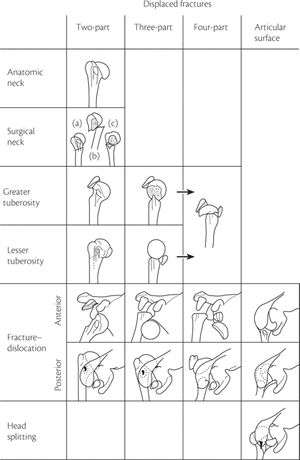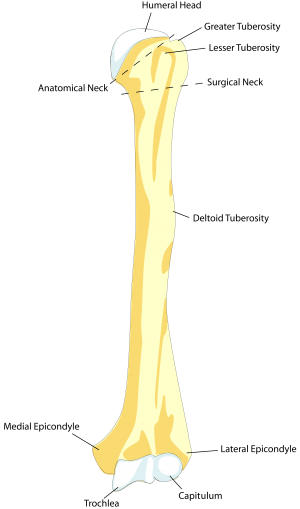Proximal humerus fracture (peds)
This page is for pediatric patients; for adult patients see proximal humerus fracture
Background
- Occurs predominantly during adolescence
- Proximal fractures classified using the Neer classification system based on number of component fractures

Clinical Features
Differential Diagnosis
Evaluation
- XR AP Lateral, scapular Y - asses fracture and rule out dislocation
- Ultrasound may be used in newborns before ossification centers present
Management
- Depends on the age of the child and degree of displacement
Non-Operative
- For almost all children, will approach non-operatively
- Excellent remodeling ability of bone and ROM to shoulder
- Ortho consult is needed to determine the best approach
- Sling and swathe splint, or coaptation splint
- Gentle ROM in 1-2 weeks as tolerated
Operative Indications
- More than 45 degrees of angulation
- Less than 50% apposition of proximal humerus and shaft
- Open fractures
- Neurovascular injury
- Intraarticular fracture
Disposition
- Slightly displaced fracture: Sling and ortho follow up
- Displaced >30 degrees: may need closed reduction
See Also
References
- Harwood Nuss
- Orthobullets
This article is issued from
Wikem.
The text is licensed under Creative
Commons - Attribution - Sharealike.
Additional terms may apply for the media files.
